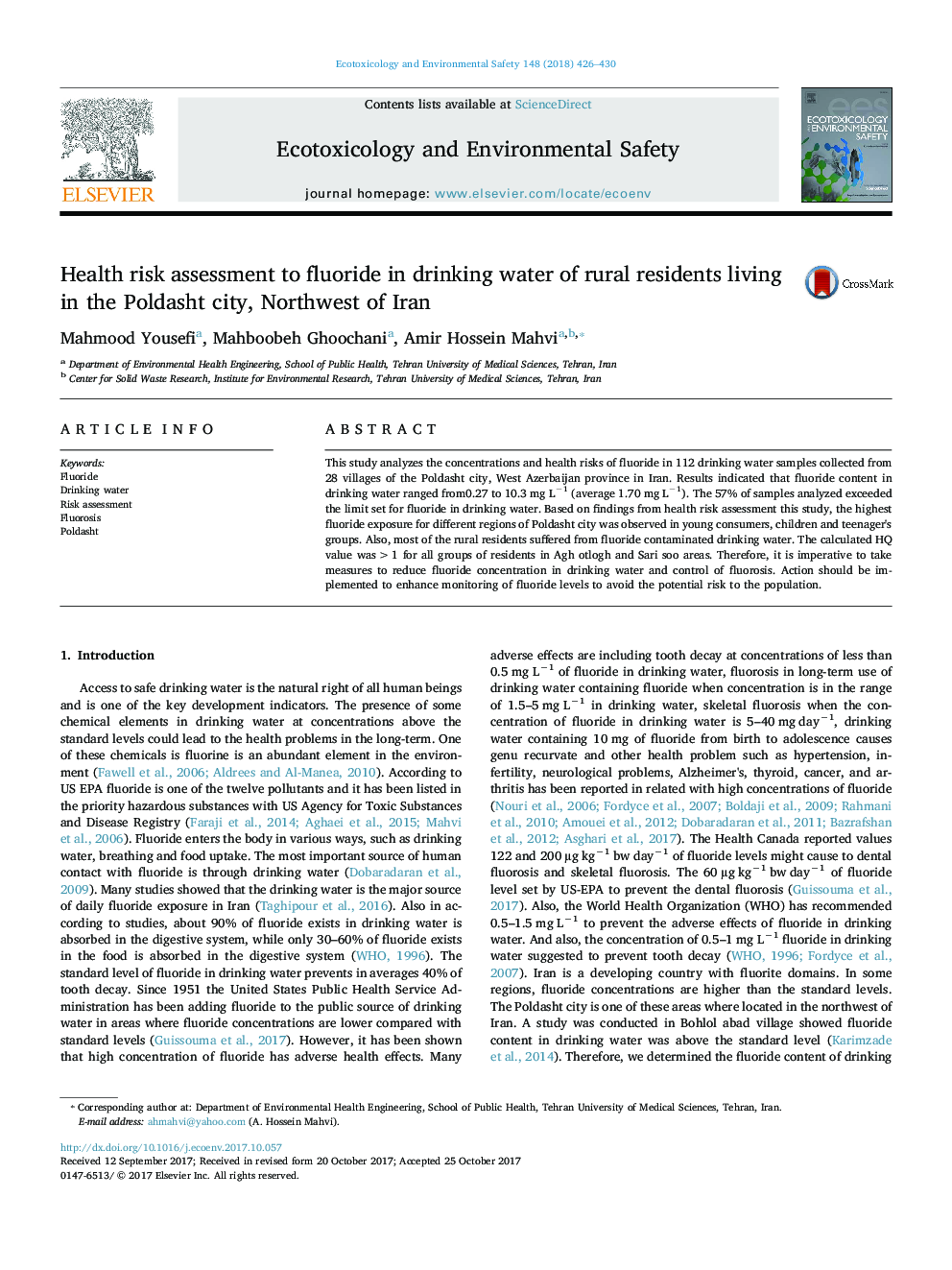| Article ID | Journal | Published Year | Pages | File Type |
|---|---|---|---|---|
| 8854718 | Ecotoxicology and Environmental Safety | 2018 | 5 Pages |
Abstract
This study analyzes the concentrations and health risks of fluoride in 112 drinking water samples collected from 28 villages of the Poldasht city, West Azerbaijan province in Iran. Results indicated that fluoride content in drinking water ranged from0.27 to 10.3 mg Lâ1 (average 1.70 mg Lâ1). The 57% of samples analyzed exceeded the limit set for fluoride in drinking water. Based on findings from health risk assessment this study, the highest fluoride exposure for different regions of Poldasht city was observed in young consumers, children and teenager's groups. Also, most of the rural residents suffered from fluoride contaminated drinking water. The calculated HQ value was > 1 for all groups of residents in Agh otlogh and Sari soo areas. Therefore, it is imperative to take measures to reduce fluoride concentration in drinking water and control of fluorosis. Action should be implemented to enhance monitoring of fluoride levels to avoid the potential risk to the population.
Related Topics
Life Sciences
Environmental Science
Environmental Chemistry
Authors
Mahmood Yousefi, Mahboobeh Ghoochani, Amir Hossein Mahvi,
